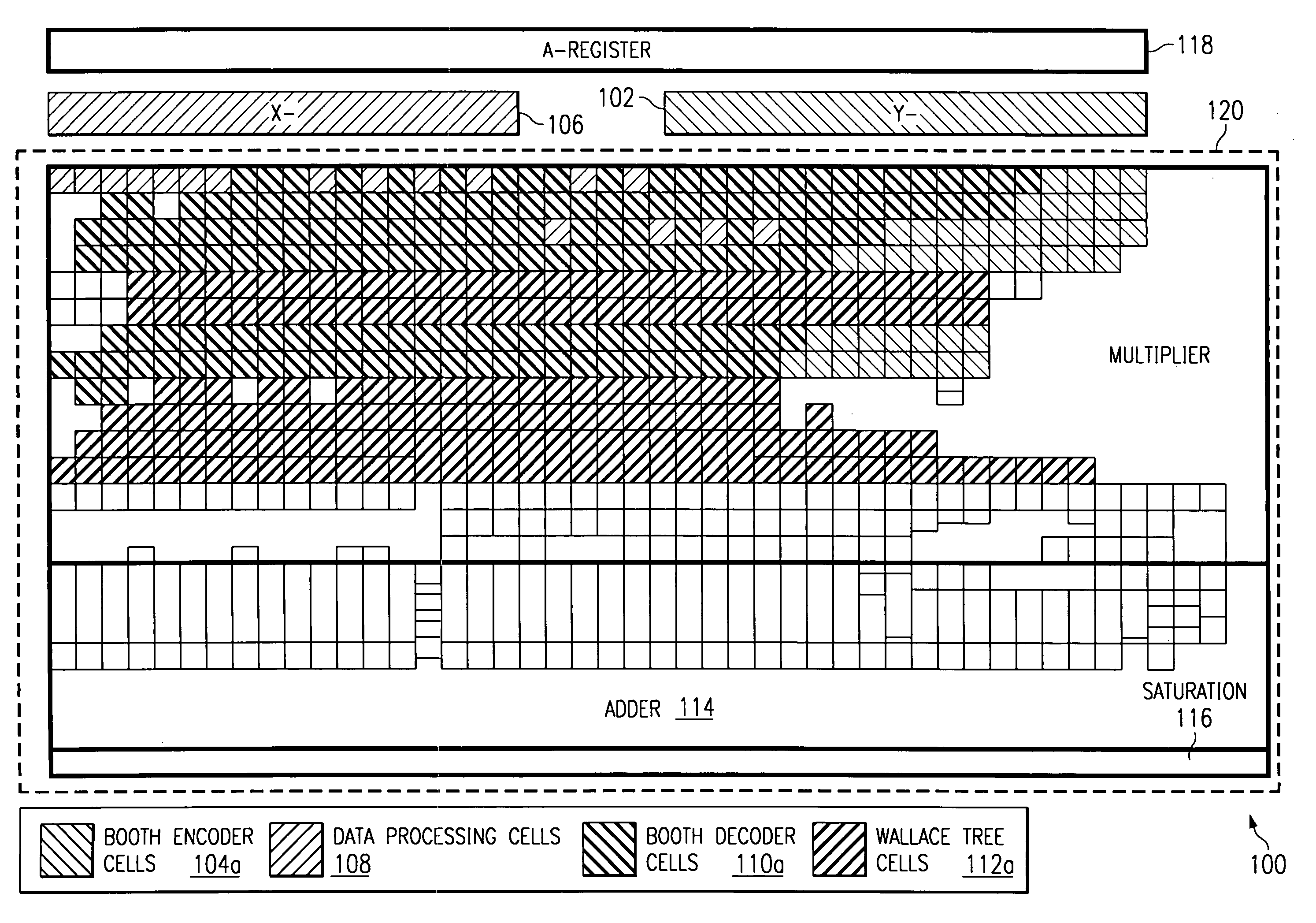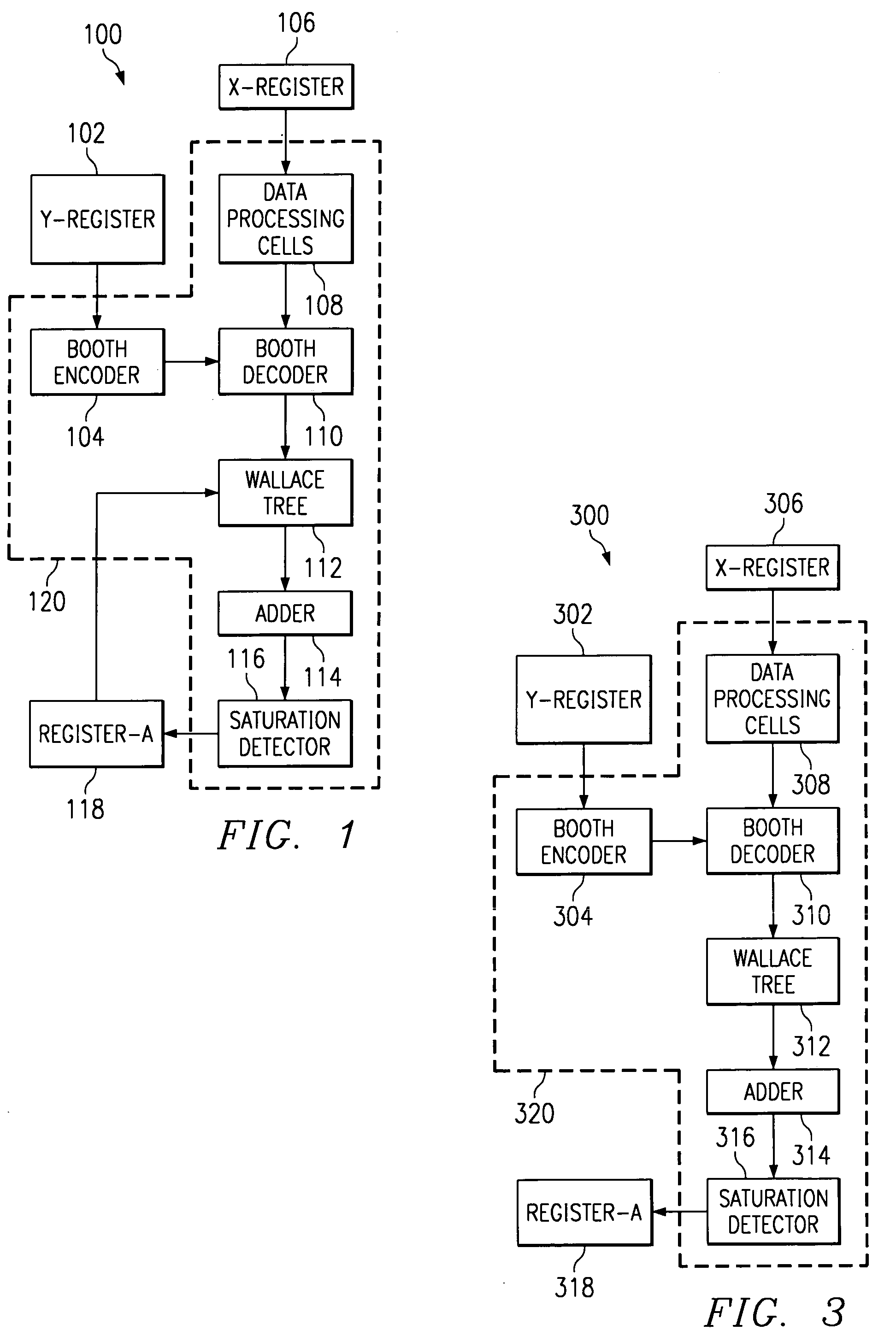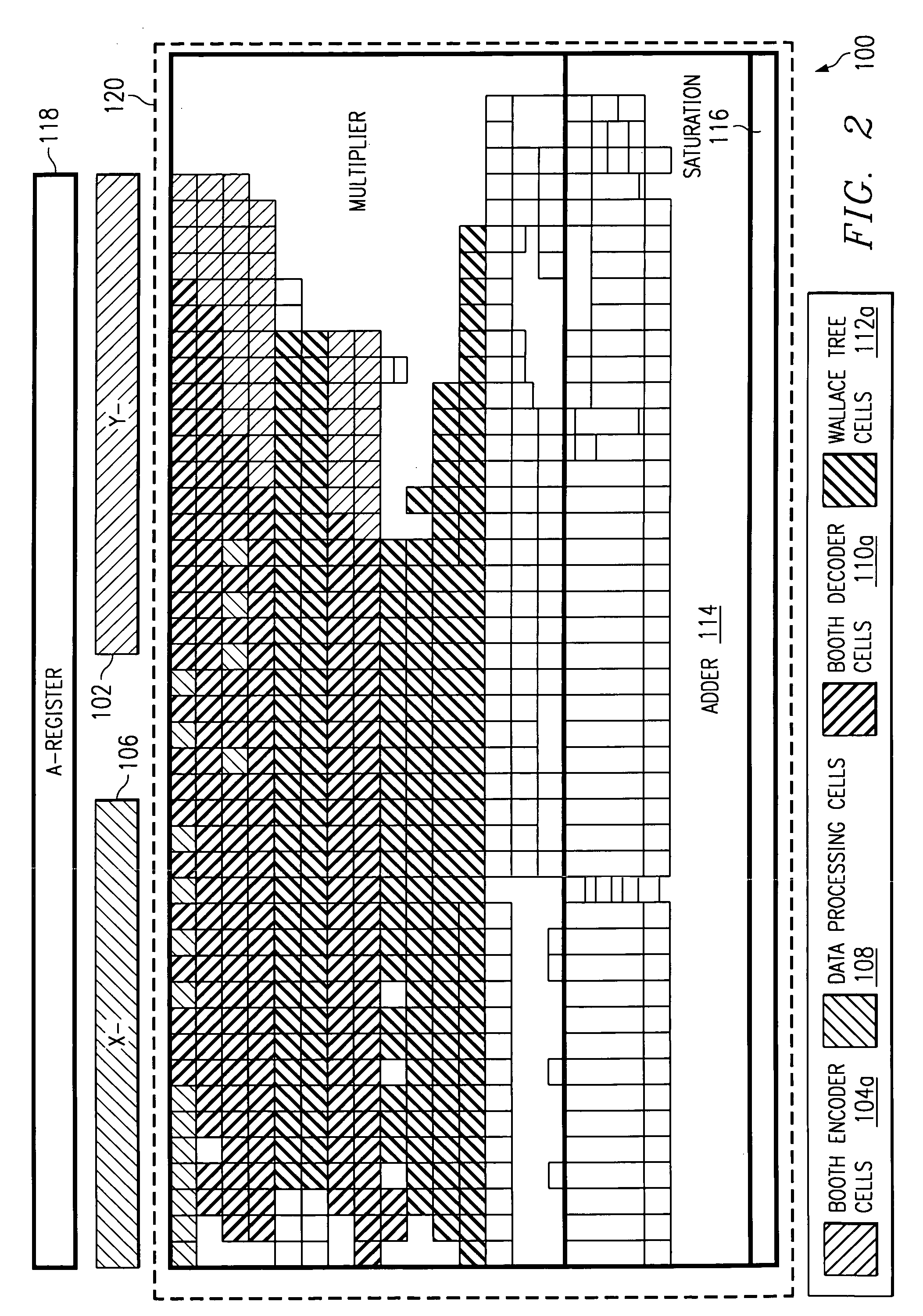[0010]Therefore, a need has arisen for multiply-accumulate modules and parallel multipliers that overcome these and other shortcomings of the related art. A technical
advantage of the present invention is that the width of at least one
transistor employed in at least one Wallace tree cell not involved in any critical paths may be reduced, which may reduce an amount of power consumed by the multiply-accumulate module or the parallel multiplier. Another technical
advantage of the present invention is that the width of at least one
transistor employed in at least one Booth decoder cell not involved in any critical paths may be reduced, which may reduce an amount of power consumed by the multiply-accumulate module or the parallel multiplier. Yet another technical
advantage of the present invention is that an amount of power consumed by cells not involved in any critical paths may be reduced, which may reduce an amount of power consumed by the multiply-accumulate module, without employing two separate power supplies for the cells.
[0011]According to an embodiment of the present invention, a multiply-accumulate module is described. The multiply-accumulate module comprises a multiply-accumulate core, which comprises a plurality of Booth
encoder cells, and a plurality of Booth decoder cells connected to at least one of the Booth encoder cells. The multiply-accumulate module also comprises a plurality of Wallace tree cells connected to at least one of the Booth decoder cell, in which at least one first Wallace tree cell or at least one first Booth decoder cell, or any combination thereof, comprises a first plurality of transistors. Moreover, at least one second Wallace tree cell or at least one second Booth decoder cell, or any combinations thereof, comprises a second plurality of transistors. In addition, at least one critical path of the multiply-accumulate module comprises the at least one first cell, and a width of at least one of the first plurality of transistors is greater than a width of at least one of the second plurality of transistors.
[0012]According to another embodiment of the present invention, a parallel multiplier is described. The parallel multiplier comprises a parallel multiplier core, which comprises a plurality of Booth encoder cells, and a plurality of Booth decoder cells connected to at least one of the Booth encoder cells. The parallel multiplier also comprises a plurality of Wallace tree cells connected to at least one of the Booth decoder cells, in which at least one first Wallace tree cell or at least one first Booth decoder cell, or any combination thereof, comprises a first plurality of transistors. Moreover, at least one second Wallace tree cell or at least one second Booth decoder cell, or any combinations thereof, comprises a second plurality of transistors. In addition, at least one critical path of the parallel multiplier comprises the at least one first cell, and a width of at least one of the first plurality of transistors is greater than a width of at least one of the second plurality of transistors.
[0013]According to yet another embodiment of the present invention, a method of designing a multiply-accumulate module is described. The method comprises the step of providing a multiply-accumulate core, which comprises the steps of providing a plurality of Booth encoder cells, and connecting a plurality of Booth decoder cells to at least one of the Booth encoder cells. Providing the multiply-accumulate core also comprises the step of connecting a plurality of Wallace tree cells to at least one of the Booth decoder cells. Moreover, in this embodiment, at least one first Wallace tree cell or at least one first Booth decoder cell, or any combination thereof, comprises a first plurality of transistors. In addition, at least one second Wallace tree cell or at least one second Booth decoder cell, or any combinations thereof, comprises a second plurality of transistors, and at least one critical path of the multiply-accumulate module comprises the at least one first cell. The method further comprises the steps of selecting a first width for at least one of the first plurality of transistors, and selecting a second width for at least one of the second plurality of transistors, which is less than the first width.
[0014]According to still another embodiment of the present invention, a method of designing a parallel multiplier is described. The method comprises the step of providing a parallel multiplier core, which comprises the steps of providing a plurality of Booth encoder cells, and connecting a plurality of Booth decoder cells to at least one of the Booth encoder cells. Providing the parallel multiplier core also comprises the step of connecting a plurality of Wallace tree cells to at least one of the Booth decoder cells. Moreover, in this embodiment, at least one first Wallace tree cell or at least one first Booth decoder cell, or any combination thereof, comprises a first plurality of transistors. In addition, at least one second Wallace tree cell or at least one second Booth decoder cell, or any combinations thereof, comprises a second plurality of transistors, and at least one critical path of the parallel multiplier comprises the at least one first cell. The method further comprises the steps of selecting a first width for at least one of the first plurality of transistors, and selecting a second width for at least one of the second plurality of transistors, which is less than the first width.
[0015]Other features and advantages will be apparent to persons of ordinary skill in the art in view of the following
 Login to View More
Login to View More  Login to View More
Login to View More 


